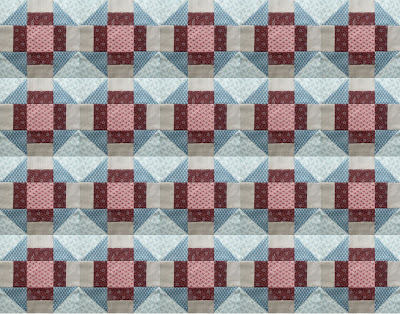I've just started a new class, One Block Wonders, at
Pieceful Quilting. I missed the first class because I was traveling back from San Francisco, so I'm just winging it. First, though, catching up with the Barrister's Block...
Barrister's Block
Way behind -- I missed the entire month of August! So far I've caught up with the first 3 blocks.
Handweave
This one came out great. No triangles (or, for me, tri-mangles). Not very sexy, but nice.
Missouri Star
I love this block. I am a big fan of the
Missouri Star Quilt Company and was delighted to make the block, even though the little duck wasn't there to quack. I love the dragonfly print in the center, which I picked up during the Shop Hop last month.
Boxes and Baskets
What is it about the red/white/blue blocks that always get messed up? I think it's because I use muslin for the background. This block required some easing around the center unit and the background rectangles. Came out OK (sort of), but lots of wrinkles. If you could see this in 3-D, you'd know that it would make a great baseball cap. Nothing flat about it!
Kaleidoscope Quilt
I couldn't wait to tackle The One Block Wonder. It's a kaleidoscope quilt. It's gorgeous and really not difficult (except that it's all triangles, and I still don't sew these very well). But I missed the first of the two classes, where they explained how to pick out fabric and cut it and arrange it.
The Fabric
I couldn't find anything at my LQS (Pieceful Quilting) and (sigh) ended up at Jo-Ann. Found an autumn floral that I thought would work; now I'm not so sure. And since I was at Jo-Ann, I didn't get the advice I needed, so I ended up with not-quite-enough-fabric. I ordered another yard on line (even though they say NEVER to to that), and sure enough, that added to the problem. Upshot: I don't have as many triangles as I should have. But guess what -- I'll figure something out!
The book we are using in the class is
One-Block Wonders by Maxine Rosenthal (C&T Publishing).
 |
| This is the Bible! |
|
I wanted a large repeat in the pattern. This was the best I could come up with on short notice. The first thing to do is to identify the horizontal repeat (about 15" here) and the vertical repeat (about 24") and rough-cut swaths along the vertical repeats. You should get six of the wide strips from your yardage (the book explains how to do this).
Cutting the Fabric
The biggest issue in the entire project (after selecting the fabric) is to line up the six wide strips to make sure that the pattern is "perfectly" aligned. (I
HATE that word!) The idea is to cut six "perfectly aligned" triangles from each strip. After aligning the wide strips, cut 3-3/4" strips. Then use a 60-degree ruler to cut triangles from each of these smaller strips.
 |
| Align the ruler to just remove the selvage. |
 |
| Cut along the edge of the ruler (sorry about the flash glare!) |
For us right-handed people, align a small ruler next to the left side of the triangle ruler; remove the triangle ruler and cut along the edge of the small ruler
You end up with all these slightly wonky pieces from the end of each strip. I've saved every one -- any ideas about how to use these??? Please let me know!
Assembling the hexagons
For each set of six triangles, there are 3 ways to align them. Maybe there's a secret that I don't know, but I needed to try out all the options to decide how to construct each hexagon.
Here's one set. These three photos show all the possibiltiies from one cut:
 |
| Option 1 |
 |
| Option 2 |
 |
| Option |
Pretty cool, huh? Here's another set of triangles that include big sections of some of the orange flowers:
 |
| Option 1 |
 |
| Option 2 |
And other set with yellow flowers:
 |
| Option 1 |
 |
| Option 2 |
Sewing the Blocks
Next up is to sew things together. The trick is to sew 3 triangles from each group together, making two halves of a hexagon. In the next class we'll put the hexagon halves on a design wall to figure out how best to create a quilt. This is the part that I'm worried about -- I think the colors here are too similar. But it will be fun anyway.
Stay tuned to see what happens!













































